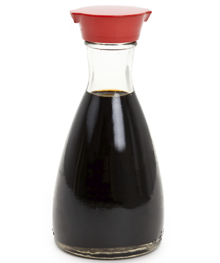Go to any sushi joint and you'll see the ubiquitous Kikkoman soy sauce bottle with its teardrop figure and its red (or green, if you're a health nut) top hat. It's a product that many of us have grown up with, something we've used at restaurants or may have in our pantries. It's a product that's lasted and it wasn't exactly born overnight.

We recently came across an interesting New York Times piece on the creator of the soy sauce bottle, Kenji Ekuan. For three years, Kenji toiled with his team to come up with the unique design and shape of the bottle. Three years and more than 100 prototypes, testing their dripless spout design (based on an inverted teapot).
Can you imagine spending three years working over and over again on a design, just to get it right? One prototype wasn't enough. To get to that iconic design, Kenji and his team had to build prototype after prototype, testing and testing again iteration after iteration. How many iterations did it take before they hit that '
Great design is about iteration. And that's something that goes back to our roots in industrial design. Think about how the iPod and how many iterations that went through before it transformed into the thin-glass device in your pocket.
But you don't get to answers by waking up one day and having a light bulb moment right off the bat, knowing what the perfect answer for a successful product is going to be. You have to get there incrementally, through iteration. Iterating and iterating rapidly is how you achieve those 'aha moments.' There are no shortcuts, but you can cut the time you spend searching for answers by iterating.